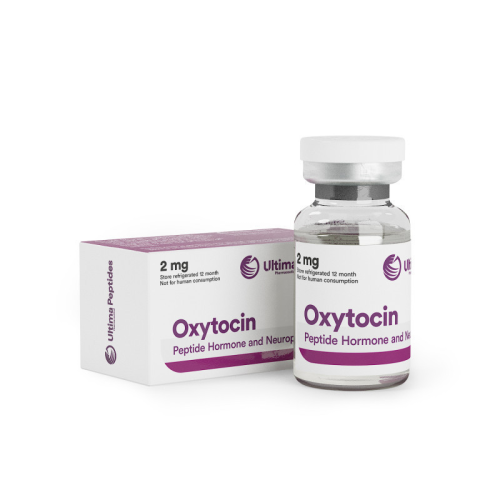Ultima-Oxytocin 2mg
- Brand: Ultima Pharmaceuticals - US
- Product Code: Ultima-Oxytocin 2mg
- Availability: In Stock
-
$45.00
MANUFACTURER
Ultima Pharmaceuticals - US
WAREHOUSE
USA Warehouse 5
SUBSTANCE
Oxytocin
,
Products are shipped without branding for security purposes.
Oxytocin is a hormone produced by the posterior lobe of the pituitary gland, a small structure located at the base of the brain.
Often referred to as the "cuddle hormone" or the "love hormone," oxytocin is released during moments of physical closeness or social bonding. A study published in 2009 in the journal Hormones and Behavior even suggests that playing with pets can trigger an oxytocin release. However, these labels may not fully capture its effects.
Oxytocin can also enhance memories of negative bonding experiences, particularly in men with strained relationships with their mothers. Additionally, it can lead to less acceptance of individuals perceived as outsiders. Thus, oxytocin's effects—whether it promotes feelings of affection or suspicion—are influenced by the surrounding context.
Oxytocin in Women
Oxytocin plays a crucial role for women. As Larry Young, a behavioral neuroscientist at Emory University, explains, "Oxytocin is a peptide produced in the brain that was first recognized for its role in childbirth and nursing."
This hormone induces uterine contractions during labor and assists in contracting the uterus post-delivery. When a baby suckles, it triggers oxytocin release, prompting the body to let down milk for feeding.
Oxytocin also fosters mother-child connections. Research indicates that "female rats find their pups aversive if they are virgins," according to Young. "However, after giving birth, their brains change, and they find the pups irresistible." Similar patterns have been observed in humans.
A study from 2007 in Psychological Science found that mothers with higher oxytocin levels in the first trimester tended to engage more in bonding behaviors, like singing or bathing their baby. While maternal bonding isn’t always instinctive—since women can adopt and nurture infants—oxytocin seems to enhance motivation and feelings of connection to the baby during pregnancy. Moreover, interactions with a baby can elevate the infant's own oxytocin levels.
Oxytocin in Men
In men, oxytocin also supports bonding. A 2012 study revealed that fathers who received oxytocin via nasal spray engaged more closely with their five-month-old infants compared to those who didn't receive the hormone. (There’s another hormone called vasopressin that has a stronger impact on men.)
However, the social implications of oxytocin aren’t entirely straightforward. A study found that Dutch students who received a dose of oxytocin had more positive feelings toward fictional characters with Dutch names, but were more negative towards characters with Arab or German names. This suggests that oxytocin's bonding effects may be directed primarily towards those regarded as part of one's in-group, as reported in a January 2011 PNAS study.
Another PNAS study from 2010 highlighted that after receiving an oxytocin dose, men who had secure relationships perceived their mothers as more caring, while those with tumultuous relationships viewed their mothers as less caring. This indicates that the hormone can strengthen social memories, influencing both positive and negative associations.
Young elaborates, "Oxytocin seems to enhance the salience of social information in the brain, linking areas responsible for processing social cues—like sights, faces, sounds, or smells—to the brain's reward system."
Oxytocin Sprays and Their Side Effects
Oxytocin nasal sprays are being explored as a potential treatment for autism, a disorder characterized by social interaction challenges. A small 2013 study published in PNAS administered oxytocin to children and adolescents with autism and asked them to identify emotions from photographs of people's eyes.
The participants did not show improved emotion recognition after the oxytocin dose, but the parts of their brains associated with social interaction became more active. This heightened brain activity might suggest that oxytocin could aid in enhancing behavioral therapy for children with autism.
"When considering oxytocin as a treatment for conditions like autism, it's crucial to ensure it's used in positive social scenarios," Young noted.
The use of oxytocin sprays outside of clinical settings, however, is less clear. Products available online without prescriptions claim to alleviate stress and improve social interactions, but they lack regulation from the Food and Drug Administration (FDA). Consequently, the effectiveness, side effects, or even the actual content of these sprays remain uncertain.
There have been no long-term studies on the side effects of legitimate oxytocin sprays used in research; most studies involve administering a single dose of the hormone. Meanwhile, Pitocin, a synthetic version of oxytocin used intravenously to induce labor, has known side effects such as nausea, vomiting, and abdominal pain.

